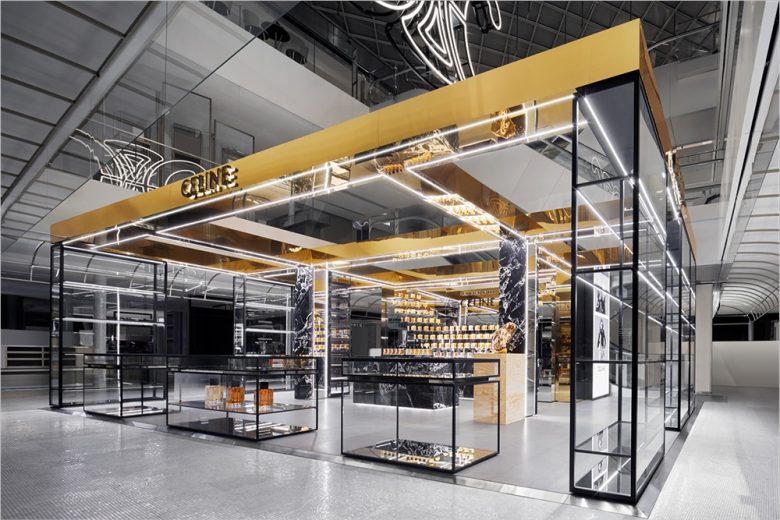Let’s explore how smart packaging can turn a fleeting retail moment into a memorable brand experience that sticks.
Pop-up shops are the lightning bolts of retail—brief, brilliant, and full of energy. But while the space may be temporary, the brand impression must be lasting.
In this fast-moving format, every visual cue counts, and packaging becomes more than just a container—it becomes a key storytelling tool.
Whether you’re launching a weekend skincare booth, a seasonal snack bar, or an indie fashion corner, your packaging needs to perform double duty: it should function practically and radiate brand identity.
In a pop-up, there are no second chances—so every pouch, label, and box has to earn its place.
Why Packaging Matters Even More in a Pop-Up
In traditional retail, a shopper might interact with your brand over time—walking by the display weekly, seeing ads, reading reviews. But in a pop-up? You’ve got seconds to grab their attention, tell your story, and close the sale.
Packaging must:
- Spark instant recognition
- Communicate value quickly
- Be practical for on-the-go shopping
- Feel collectible or gift-worthy
- Reinforce your pop-up’s visual world
This is where design, material, and function converge.
1. Align Packaging With the Pop-Up’s Vibe
Pop-ups are often immersive, highly curated environments. You should be creative so your packaging should feel like it’s part of the set design—not an afterthought.
Ask yourself:
- Does the packaging reflect the theme of the pop-up?
- Are the colors, finishes, and materials in harmony with the interior setup?
- Is your packaging photogenic (and Instagrammable)?
For example, if your pop-up is inspired by cottagecore aesthetics—soft linens, florals, vintage props—your packaging could incorporate kraft materials, soft pastel ink, and die-cut labels with romantic typography. It’s about creating a cohesive sensory experience.
2. Use Flexible Packaging to Save Space and Create Drama
Pop-ups often deal with tight square footage and setup limitations.
Flexible packaging formats like stand-up pouches, roll film wraps, or gusseted sachets help you save space and stand out.
Why flexible formats work for pop-ups:
- Easy to ship in bulk and store compactly
- Lightweight and shelf-efficient—with keep fresh options like degassing valves
- Customizable for small batch runs
- Can be printed with vivid, high-impact graphics
These features are especially useful for food startups, wellness brands, and indie cosmetics, where product variation is high and inventory flexibility is key.
3. Think Collectibility: Make It Feel Like a Limited Drop
Pop-up shoppers love exclusivity. They’re not just buying a product—they’re taking home a piece of the experience. Smart packaging makes this possible.
Design for collectibility by:
- Including a “Pop-Up Edition” badge or foil stamp
- Numbering each item or including limited-run artwork
- Creating seasonal colorways or patterns just for the event
- Adding branded sleeves or reusable zip pouches
This elevates the perceived value and gives the shopper a reason to keep the packaging, increasing brand recall long after the event ends.
4. Don’t Skip the Label—Make It Tell Your Story Fast
You may not have time for lengthy brand conversations at a busy pop-up counter. That’s where your label becomes your pitch.
A well-crafted label should:
- Immediately show what the product is
- Reinforce your brand’s tone and values
- Highlight your key differentiator (natural, vegan, artisanal, etc.)
- Include a QR code for deeper digital engagement
Pro tip: Consider modular label designs. A generic base label with space for small, event-specific stickers allows you to customize your messaging without reprinting everything.
5. Offer Multi-Product Packaging That Feels Like a Gift
Pop-ups are a great time to bundle. Offering curated packs or “discovery sets” not only increases your cart size—it helps build long-term customer interest.
Small-batch bundles that work:
- Mini sampler pouches of 3–5 wellness freeze dried treats
- A skincare starter kit in a branded drawstring pouch
- A snack trio with tear-away individual sections
- A gift box with a sleeve that says: “I Got This at [Your Brand’s Pop-Up]”
Use simple structures like tuck-top boxes, kraft cartons with belly bands, or pillow pouches to make bundles feel intentional, not just thrown together.
6. Don’t Forget About Carry-Out Packaging
The shopping bag (or takeaway pouch) is a walking billboard. Make sure it reflects your brand’s aesthetic and the spirit of the pop-up.
Ideas to try:
- Custom-printed kraft paper bags with your pop-up name/date
- Reusable zip pouches or printed canvas totes
- Minimalist stickers to seal tissue-wrapped products inside the bag
Even a small moment of delight—like a thank-you card or scent strip inside the bag—can make a strong emotional impact.
7. Case Study: The Pop-Up That Turned a Pouch Into a Keepsake
A fictional but relatable example: Glow Bloom, a new clean beauty startup, launched a 2-day pop-up inside a wellness boutique. They packaged their face masks in holographic stand-up pouches featuring a custom brushstroke pattern only available at the event.
Inside the pouch? A handwritten thank-you card with a QR code that linked to an exclusive behind-the-scenes founder video.
Customers loved the design so much they began posting photos tagging the brand—and asking when the limited edition pouch would return.
Moral of the story? Temporary packaging can lead to permanent connections when it’s thoughtful and brand-aligned.
Final Thoughts: Your Packaging Is Your Pop-Up’s Lasting Impression
Pop-ups are about presence and memory. Your brand has just a few moments to connect—and your packaging should act like a silent ambassador, extending that interaction even after the shopper walks away.
In a world of visual overload and short attention spans, strategic packaging design turns a quick transaction into long-term recall.
So whether you’re setting up shop for a single weekend or a six-month activation, make sure your packaging is designed not just to contain—but to communicate, delight, and endure.
